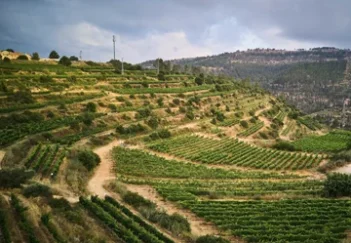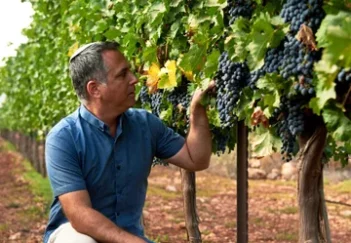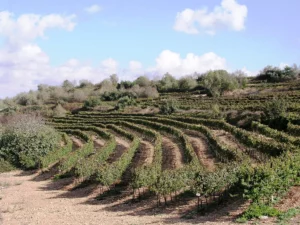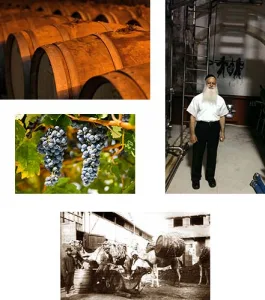Sparkling wine is the wine of fashion and celebration. Whether on New Year’s Eve or at a wedding, it remains the classic wine to make a toast with. It is also a symbol of success and happiness. Just look at the winner of a Formula One race. It is always Champagne he opens at the end of a race, never any other wine.
Champagne is the byword for quality in sparkling wines. It is made in the Champagne region in northern France in the most expensive, time consuming way. That is that the second fermentation, which provides the bubbles, occurs in the actual bottle which will eventually be sold. It can be bone dry, crisp with mouth puckering acidity or rich with a bready, yeasty aroma. If it is image you want, then champagne is the only answer.
For years wine with bubbles in was a winemaking fault. The idea of putting the bubbles there on purpose by a secondary fermentation was invented, believe it or not, by an Englishmen, Christopher Merrit in the late 17th century.
Folklore says that it was the blind monk, Dom Perignon, who invented it, running and shouting : “Come quickly, I think I am drinking stars!” He perfected the method of production, but as a consolation for the story not being true, his name lives on in one of the best known luxury champagnes in the world.
As soon as the bubbles were reliably preserved in bottle, champagne became the great prestigious pick me up it has continued to be until today.
The only problem then, was that it was sweet, even very sweet. The sweetest cuvées were produced for the Russians. The British had the driest, but even they were semi dry to medium in sweetness.
It was only in the mid-19th century that the Champagne House, Perrier Jouet rather gingerly produced the first dry champagne and it took some time before it was accepted, but the word champagne still held its magic.
Champagne made by the Champagne Method, is now more correctly known as the Classic or Traditional Method, is no longer confined only to Champagne. Today many countries produce wine in this way. For instance California, Australia and New Zealand have flavorful sparkling wines that rival Champagne for quality. The best sparkling wines are produced in cooler climates and it will certainly be a surprise to many that England today has some very high quality sparkling wines. The soils of south east England and Champagne are similar.
The first Israeli Classic Method sparkling wines were made by Carmel. However it was before its time, expensive sparkling wines were not popular and it was labor intensive to produce. Eventually they stopped and returned to lesser expensive sparkling wines, producing by the Charmat Method or what I call the Coca Cola method.
In the Charmat process the second fermentation takes place in a tank and is then bottled under pressure. In the Coca Cola method there is simply an injection of CO2 gas into to the wine. However, there are still some old pupitres (wine racks for riddling) to be found at Carmel’s wineries to provide evidence of their pioneering effort.
In the 1990’s the Golan Heights Winery started producing classic method sparkling wines using a more modern production line and their Yarden Blanc de Blancs in particular was swiftly recognized as a world class wine, winning major trophies..
The language of sparkling wines can be confusing. ‘Brut’ refers to a dry or very dry wine. The word Sec or Extra Dry refers to an off dry wine. Demi Sec is semi dry to semi sweet and Rich is sometimes used to denote sweet.
A Blanc de Blancs is a sparkling wine made 100% from white grapes, usually Chardonnay. It will be lighter with a more delicate aroma than the others. Blancs de Noirs is a sparkling wine made only from black grapes, usually Pinot Noir or Pinot Meunier. It will be more full bodied with some berry notes in the aroma. The three grapes together make up the traditional Champagne blend.
There are other sparkling wines particularly popular in Israel. Cava is Spain’s national sparkling wine, which is made in the Catalonian region. It provides quality, and is made in the traditional way, but at a cheaper price than the French version.
Cava is in fact so popular that it has become the slang in Israel for any sparkling wine.
Prosecco is the latest rising star. This is a light, soft, fruity and slightly creamy sparkling wine made in the Veneto region of Italy. It is usually a little cheaper than Cava, and so is attractive for those buying on price.
Asti Spumante from North West Italy has a frothy grapey sweetness and is a fully fledged sparkling wine. For those who like a more delicate fizz, try the lightly sparkling Moscato d’Asti.
Lambrusco is a semi sparkling wine, with a slight fizz. These are known as frizzante in Italian. It may be red or white and in any style from dry to semi sweet. The sweet ones are glugging wines, but the drier wines can be bracing and refreshing.
Sparkling wine is the classic aperitif and goes with all mezze, hors d’oeuvres, fish dishes, sushi and poultry. In fact champagne goes with anything and everything and there is nothing wrong with drinking it throughout a meal. It is even a good way to end a meal after the dessert wine, providing a clean, fresh finish.
The versatility of sparkling wine, is best summed up by Lily Bollinger, the legendary owner of the Bollinger Champagne House. This memorable quote, I have framed in my office:
I only drink champagne when I’m happy and when I’m sad. Sometimes I drink it when I’m alone. When I have company I consider it obligatory. I trifle with it if I’m not in a hurry and drink it when I am, otherwise I never touch the stuff, unless I am thirsty.” Serve your sparkling wine ice cold. Put it in the fridge for a few hours, or even in the freezer for a short time, as long as you do not forget it.
Opening sparkling wine should be done with the utmost care. The cork can become a dangerous missile because of the pressure in the bottle, which equals that of a tire in a double decker bus. Hold the bottle at 45 °, being careful to ensure it is not pointing at anyone. Gently undo the wire on top of the cork, always maintaining a finger on top of the cork as a precaution. Hold the cork in one hand and bottle in the other and turn the bottle, whilst easing the cork and it should come out with a light swoosh, or an erotic sigh, rather than a big pop.
Champagne glasses historically were the flat saucer glasses apparently shaped on Marie Antoinette’s breast. Now these are considered more suitable for cocktails or ice cream. More in favor are the tulip or flute glasses which concentrate the aromas and maintain the steady flow of bubbles. Actually any white wine glass is more than adequate. Israel produces a full range of sparkling wines from the lightly sparkling Moscatos to the finest Classic Method wines. For those who wish to drink blue and white instead of imported wine, these are some good quality options. .
Yarden’s sparkling wines (Blanc de Blancs and Rosé) are the best, Pelter’s is the rarest and Gamla’s is also top quality, but is less expensive than both. Carmel Private Collection, Tabor and Teperberg produce very good mid-priced sparkling wines, which are good value. Then there are fun sparkling wines like Pninim, Moscato and Carignano which are always popular.
Whatever your poison, there is a sparkling wine at every price and in every style.
Cheers! Le Haim!


















